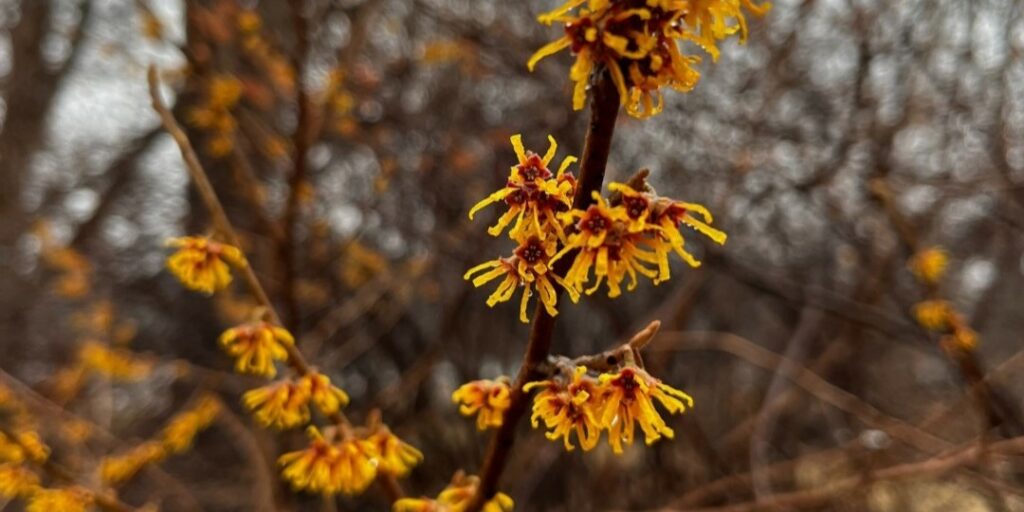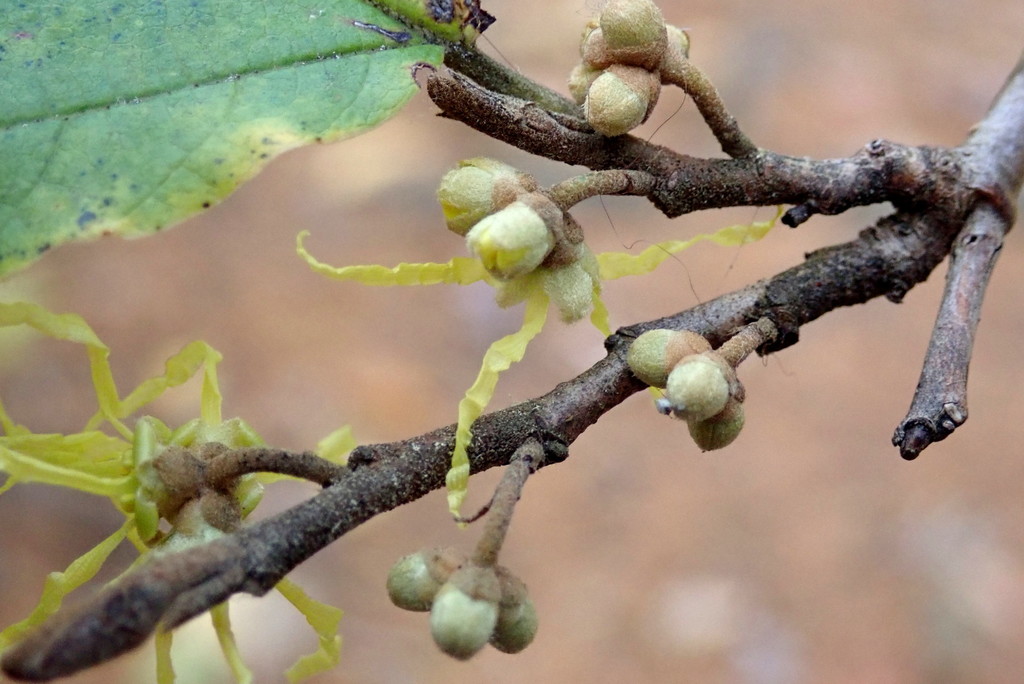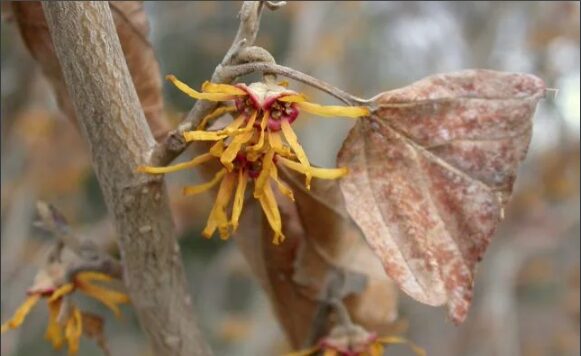


Project Overview
You have been called to participate in the ForestKeeper’s Witch Hazel Hunt!
Vernal, or Ozark, witch hazel is among the earliest blooming native plants of Missouri. Its blooms, small flowers often hidden by persistent old foliage, provide sustenance and shelter to over wintering pollinators. While typically vernal witch hazel starts blooming midwinter, warm temperatures started an early bloom! By joining this initiative, each observer becomes a vital part of a larger effort to create a record of Vernal Witch Hazel growth across different regions of Missouri.
Participants are asked to locate a specimen and track the progression of its bloom pattern. Multiple observations are encouraged.
Happy Hunting!
Species Description
What does the species look like? Vernal witch hazel is a deciduous shrub or small tree, reaching 3 to 40 feet tall with multiple branching stems. It has fragrant flowers, ranging from a pale to deep yellow or reddish and orange colors. In the wild, witch hazel Occurs in gravel and rocky dry streambeds, at the bases of rocky slopes, and along streams, and rarely on wooded hillsides in rocky draws. It’s a characteristic shrub in Ozark highland streams but as it becomes increasingly used for landscaping and erosion prevention, as well as medicinal purposes in gardening, its growing in popularity in public and private plantings. Vernal witch-hazel is widely cultivated statewide, in part for its amazing trait of blooming as early as January, sometimes when snow is on the ground.
In midwinter, the plant flowers on bare stems with in solitary blooms or clusters along the wood. It’s uniquely shaped, with orange to dark red center and four yellowish ribbon or strap like petalss playing out to a little more than ½ inch in length.
It is especially fragrant on warm, sunny afternoons when the fragrant oils of its flowers volatilize and float through the air. It only takes a day or two of sunshine and relative warmth to make Ozark witch-hazel burst into bloom, and apparently that’s all it takes to awaken gnats, midges, flower flies, and a variety of other flies from winter dormancy, too. They are attracted by the flowers’ sweet scent. When temperatures drop towards freezing, the flowers curl back their petals to protect them from damage- check out the unfurling of a popular hybrid species in the neighboring video!
Shrubs and small trees of the genus Hamamelis, are spread across North America. All of them have the bizarre habit of flowering in cold weather, much farther into the depths of winter than even the magnolias, forsythia or serviceberries. In Missouri this genus has two representatives, H. virginiana, common or American witch hazel, and the less common H. vernalis, Ozark or vernal witch hazel, native only to the Ozark plateau of Missouri, Arkansas and Oklahoma.
The Witch Hazel has a rich history, associated with captivating folklore and practical applications. Early European settlers observed Native Americans employing Witch Hazel branches to locate underground water sources, likely contributing to the plant’s common name. It is hypothesized that early white settlers referred to Witch Hazel as “Wicke Hazel” because the dowsing end of the forked branch would bend when detecting underground water. This practice gained widespread use among American settlers and was later expanded to Europe, becoming a well-established feature of well-digging that persisted into the 20th century.

